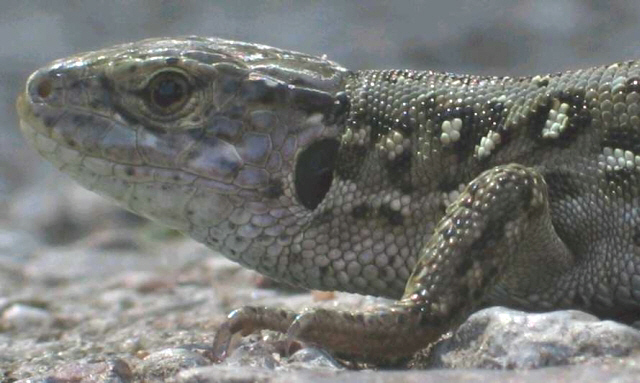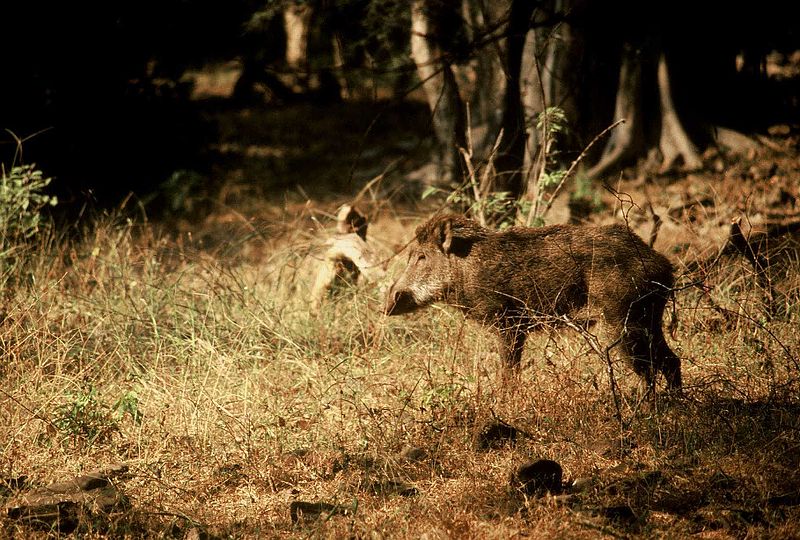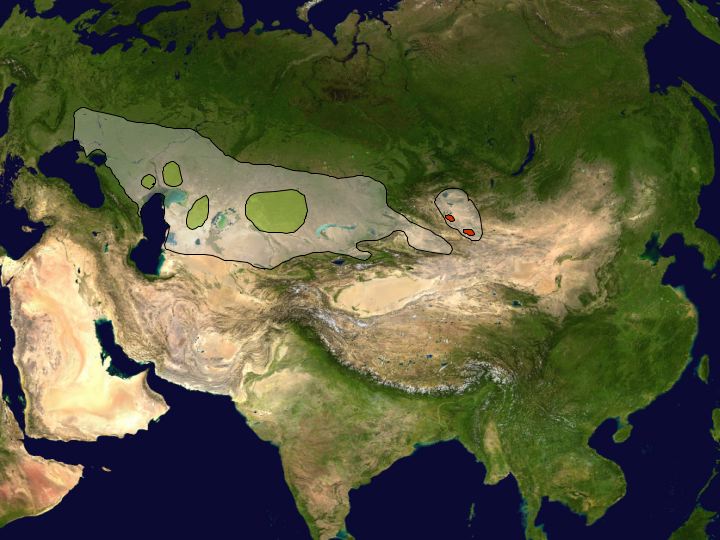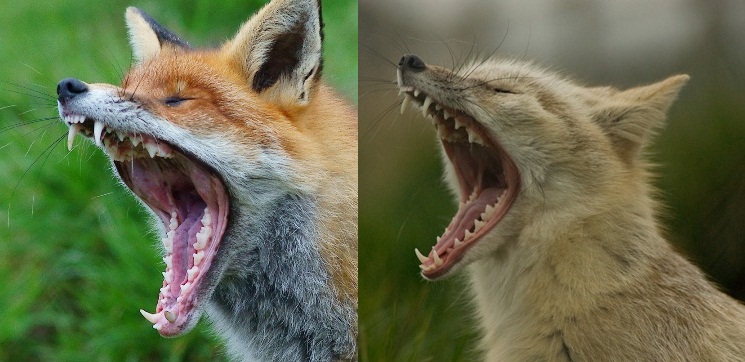Habitat & Geography
The Saiga tatarica has three different subspecies that occupy similar environments in different areas of the world. One of these subspecies lives in eastern Russia, another in Kazakhstan and the third population occupies a habitat in Europe. Previously there were populations that inhabited areas in China and north western Mongolia, but these populations are now extinct due to severe winters and droughts that lasted throughout the summer months. Sometimes in the winter, large groups of Saiga migrate south to their winter habitat, covering somewhere around 72 miles in a day (Lushchekin, 2007). The populations of Saiga that live in Kazakhstan migrate to either Uzbekistan or Turkmenistan which are more known for their desert habitats, with little amounts of snow, during the winter season.
All of these different areas that the Saiga inhabits are very similar in makeup of the surrounding landscape. These areas are all composed of dry steppes consisting of low growing grassland or deserts. These animals tend to occupy areas that are open and flat as they are fast runners on the open land when they need to be, to outrun predators. Despite the dryness of their habitat, they are able to use ample water sources present in the surrounding areas where they roam throughout the days.
Other than the population that sometimes migrates during the colder winter months, the Saiga tends to stay solely in these areas described above. This landscape is quite specialized for how the animal eats and how they become aware of potential predators. Because they are able to become aware of their predators early, they have the time to escape from the area. The populations that do migrate in the winter move to areas that have lesser amounts of snow, as the Saiga is not built to move through treacherous amounts of snowy terrain. In the spring they migrate to summer grounds in the northern areas of Kazakhstan (Singh, 2010). However, the change to the colder environment does induce a thicker coat of fur on the Saiga tactaria enabling them to brave the colder weather in these areas that they migrate to.
 There are a variety of different organisms that coexist alongside
of the Saiga in the steppes with low grassland and in the deserts. Animals such as the sand lizard (Lacerta agilis), the
weasel (Mustela nivalis) the wild boar (Sus
scrofa), the
mallard (Anas platyrhynchos) or the red deer (Cervus elaphus) occupy this same habitat
(Lushchekin, 2007). Plants such as
juniper (Juniperus communis) also inhabit the same
areas. They also occupy the same habitat as some of
their predators which include varieties of wolves such as the
Gray
wolf (Canis lupus) and many other animals such as the Red Fox,
Corsac Fox, and winged
There are a variety of different organisms that coexist alongside
of the Saiga in the steppes with low grassland and in the deserts. Animals such as the sand lizard (Lacerta agilis), the
weasel (Mustela nivalis) the wild boar (Sus
scrofa), the
mallard (Anas platyrhynchos) or the red deer (Cervus elaphus) occupy this same habitat
(Lushchekin, 2007). Plants such as
juniper (Juniperus communis) also inhabit the same
areas. They also occupy the same habitat as some of
their predators which include varieties of wolves such as the
Gray
wolf (Canis lupus) and many other animals such as the Red Fox,
Corsac Fox, and winged
 animals such as Golden Eagles.
animals such as Golden Eagles.
For more information on how the Saiga has adapted to its enivornment visit our adaptations page, or refer back to the home page
Picture of map from:
http://commons.wikimedia.org/wiki/File:Saiga_tatarica_historic%26current_distribution.jpg
Picture of Sand Lizard from:
http://commons.wikimedia.org/wiki/File:Lacerta_agilis.jpg
Picture of Wild Boar from:
http://commons.wikimedia.org/wiki/File:Sus_scrofa_cristatus_Ranthambore_0.jpg
Picture of Red and Corsac Fox:
http://commons.wikimedia.org/wiki/File:Yawning_red_and_corsac_fox.jpg

